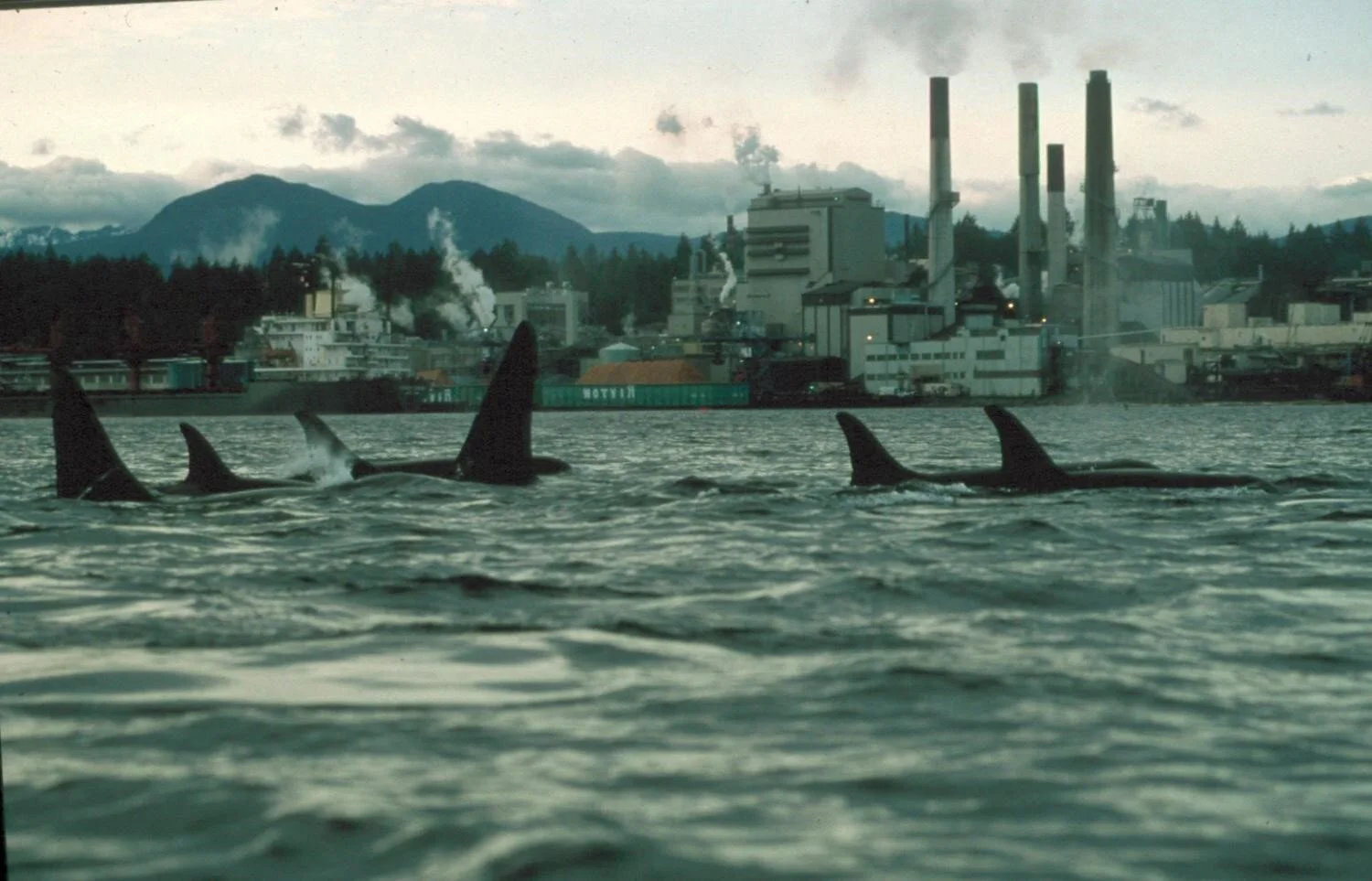Southern Resident Killer Whales are severely endangered and human actions have fueled this decline. At what point does such degradation cross the legal threshold into destruction, introducing our own legal obligation to respond in accordance with the Endangered Species Act?
From depleted salmon populations to increased vessel disturbance and contaminated waters, a recent SeaDoc-funded paper suggests we may have already crossed that threshold into illegal destruction.
Back in 2018 former US Secretary of the Interior and CEO of REI Sally Jewell donated her full honorarium as keynote speaker for the Salish Sea Ecosystem Conference to the SeaDoc Society. We housed that funding within the Salish Sea Institute at Western Washington University and together, SeaDoc and the Salish Sea Institute co-sponsored Oceans Initiative to gather a meeting of lawyers and scientists with environmental expertise from the U.S. and Canada to discuss the legal implications of Southern Resident Killer Whale habitat destruction.
The paper resulting from the workshop, titled Destroying and Restoring Critical Habitats of Endangered Killer Whales, was recently published in the journal BioScience. Lead author Rob Williams, Chief Scientist at Oceans Initiative, says that the US Marine Mammal Protection Act, Endangered Species Act and Canada’s Species at Risk Acts have been largely successful in preventing the outright killing of marine mammals.
“But protection of the habitat that those species need to survive is proving to be more challenging,” he said. “The whales are showing us that we are not adequately protecting the habitat essential for their recovery.”
In the paper, Williams quotes Dr. David Bain’s reference to the Morrey Island gravel mine, which states that we can’t know “which raindrop caused the flood,” but that the flood is coming regardless. It could be that the flood has already arrived.
This was collaborative work at the intersection of science, law and policy. It’s an innovative approach to conservation that will become increasingly vital as small environmental fixes along the margins fail to recover species and critical habitat.
“We have done the small things to save endangered killer whales and salmon,” said Joe Gaydos, SeaDoc Science Director and past member of the Governor’s Killer Whale Task Force. “Now is the time to be bold and take big actions. Their survival depends on it. Our well being does too.”
The SeaDoc Society and our collaborators are communicating such urgency with the Governor’s office and Federal elected officials to convey the findings and the science that backs them.
"Scientists have clearly shown that Southern Resident Killer Whale habitat has been and is being degraded to an extent inconsistent with the Endangered Species Act,” said Dr. Tim Ragen, Retired Executive Director of the US Marine Mammal Commission, co-author on the paper and participant in the Ocean Initiative’s workshop. “The Federal managers responsible for their recovery have simply not stepped up to the plate.”
All the science in the world alone cannot make change if people don’t understand that science and act on it. Now is the time to act.

